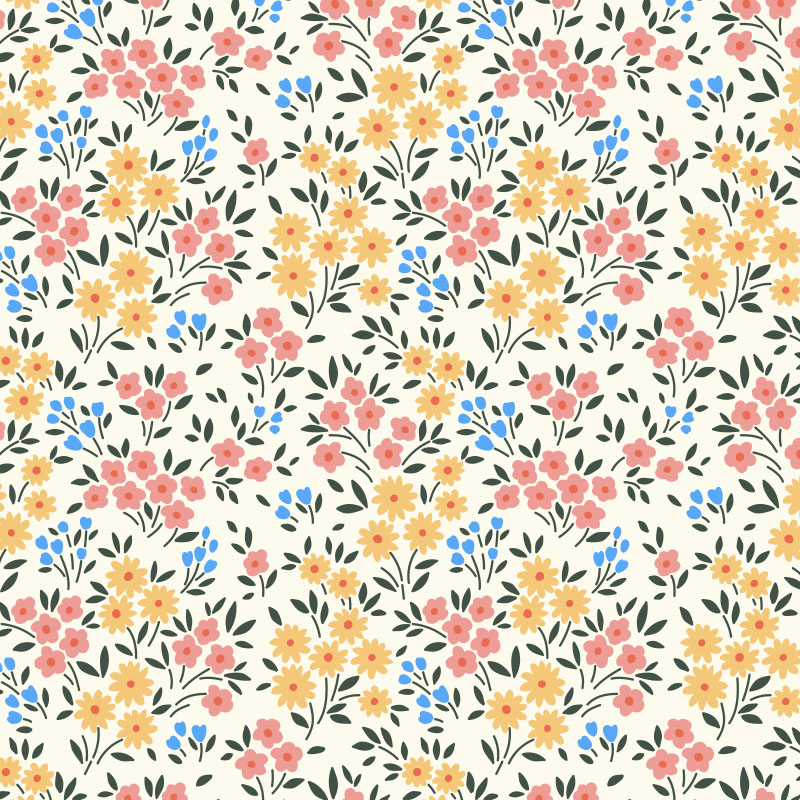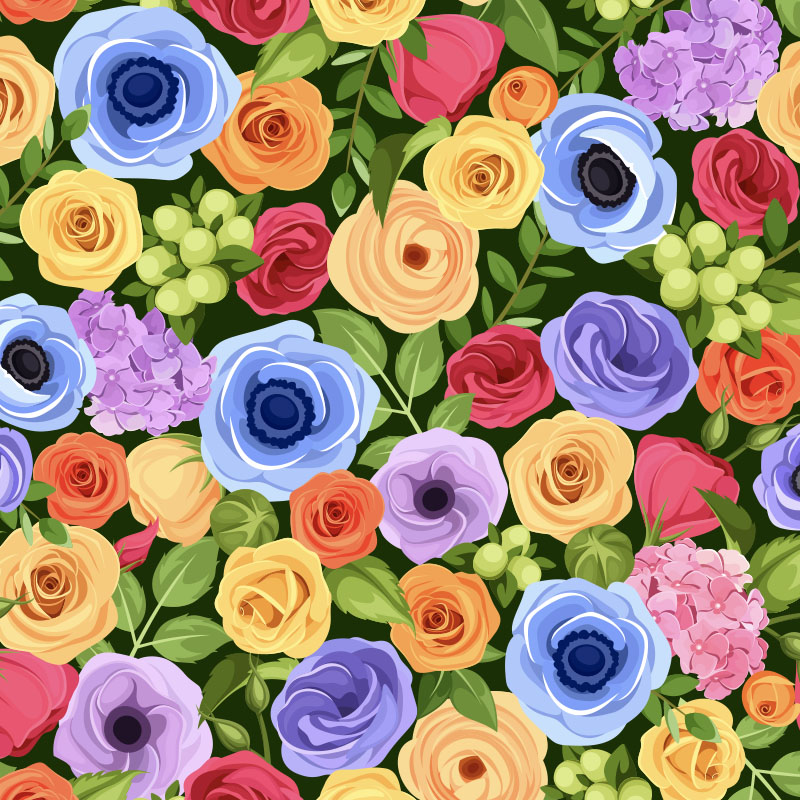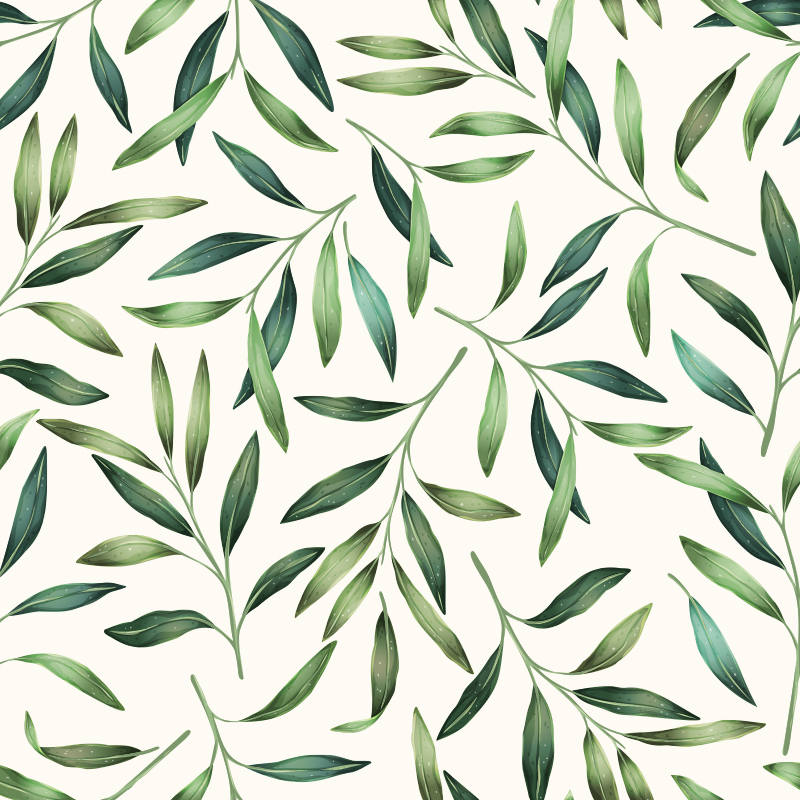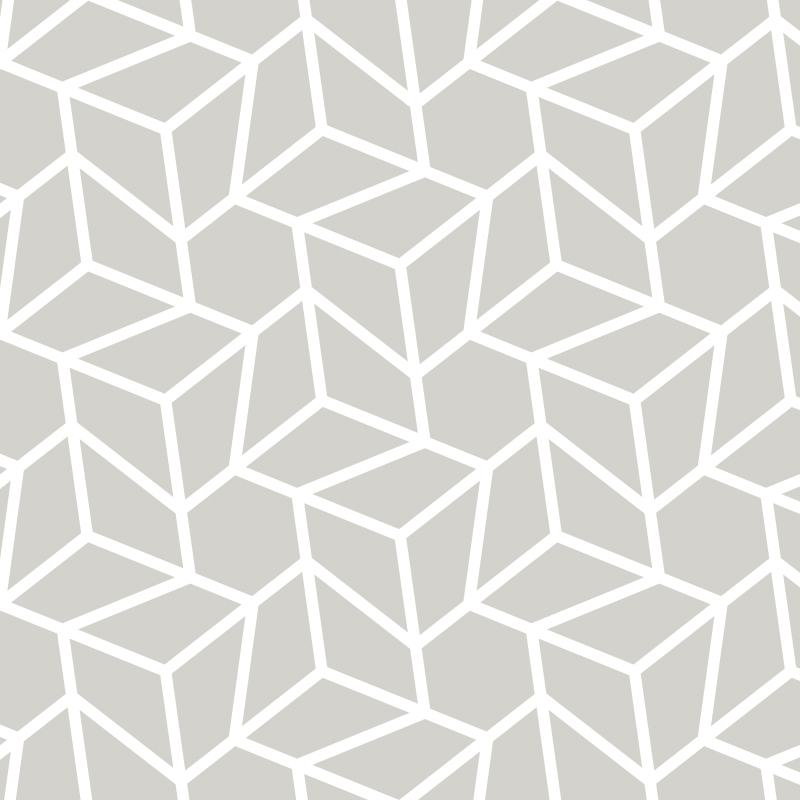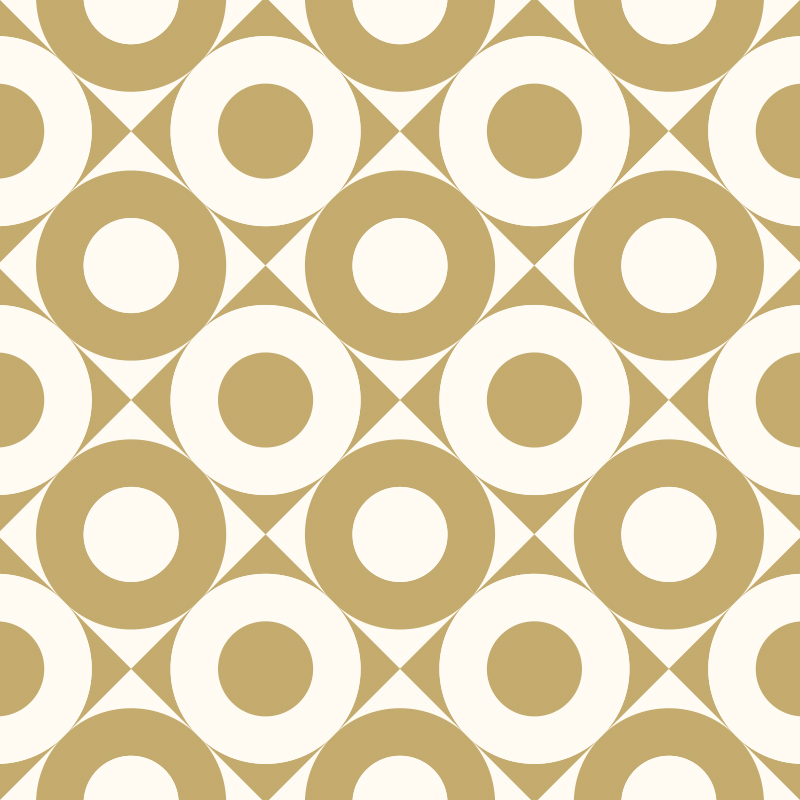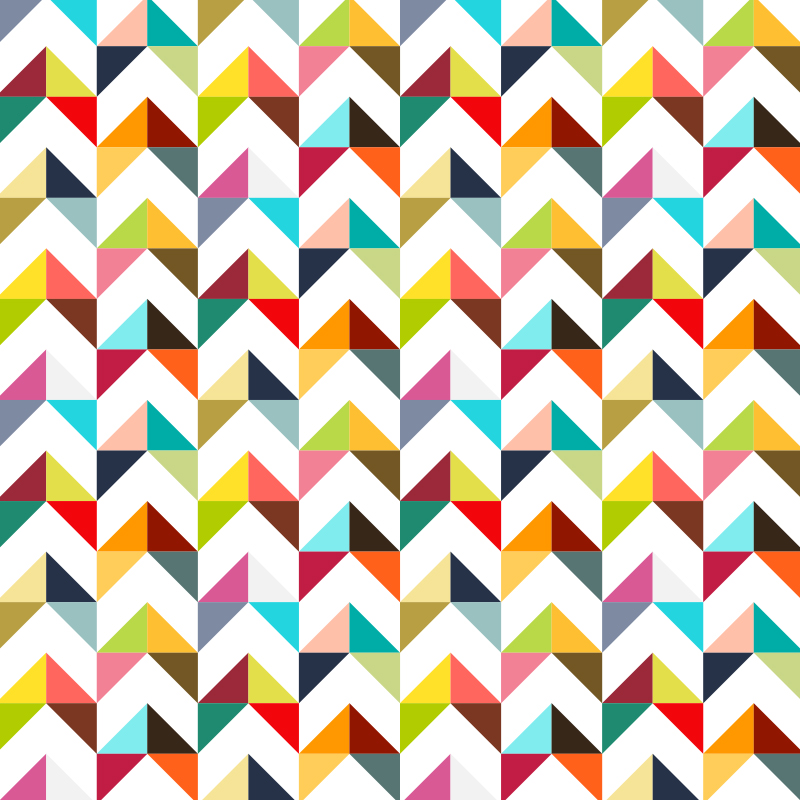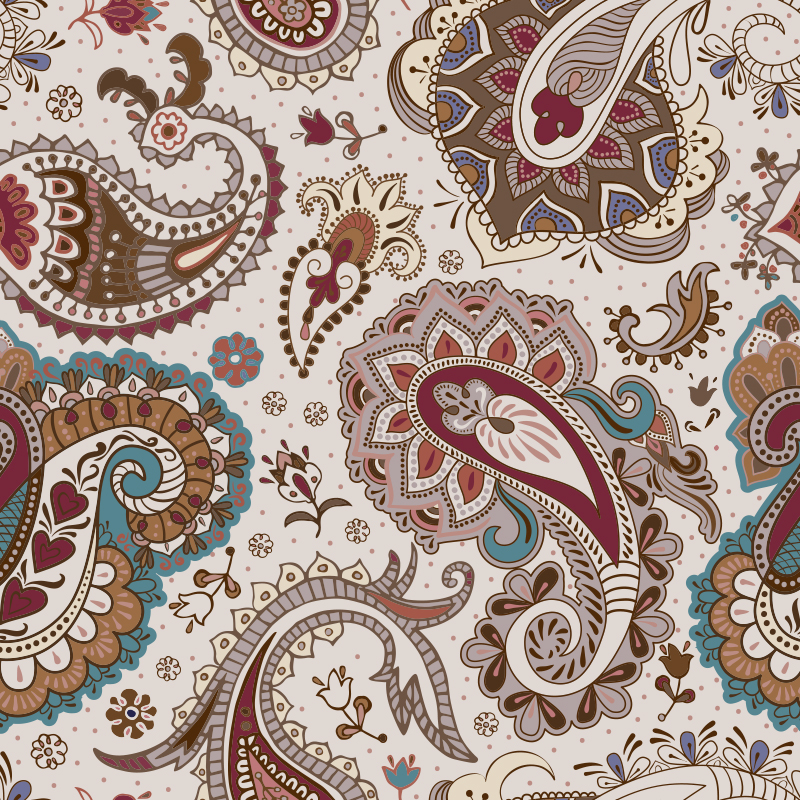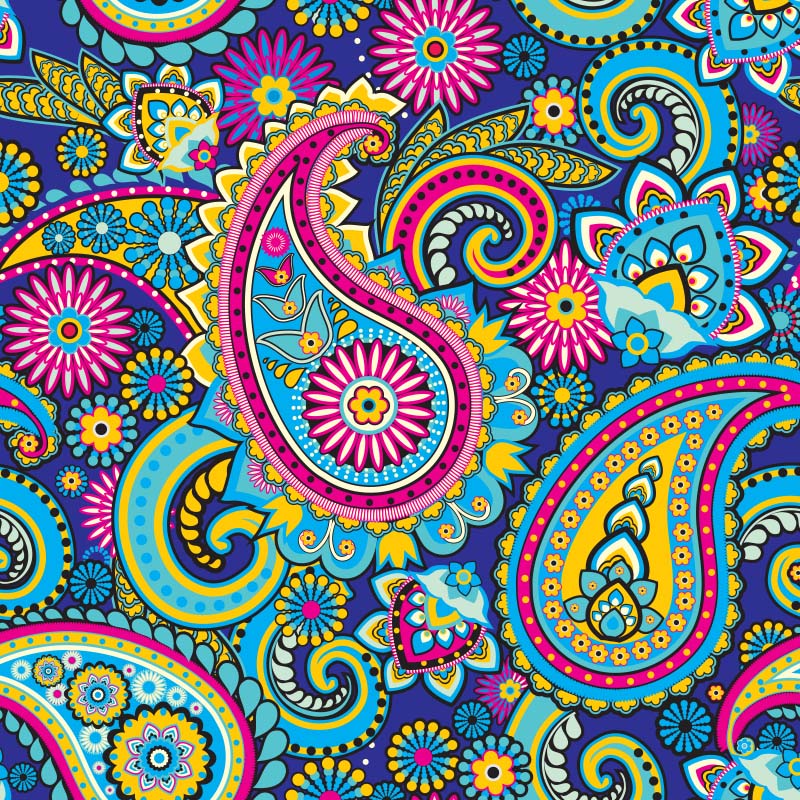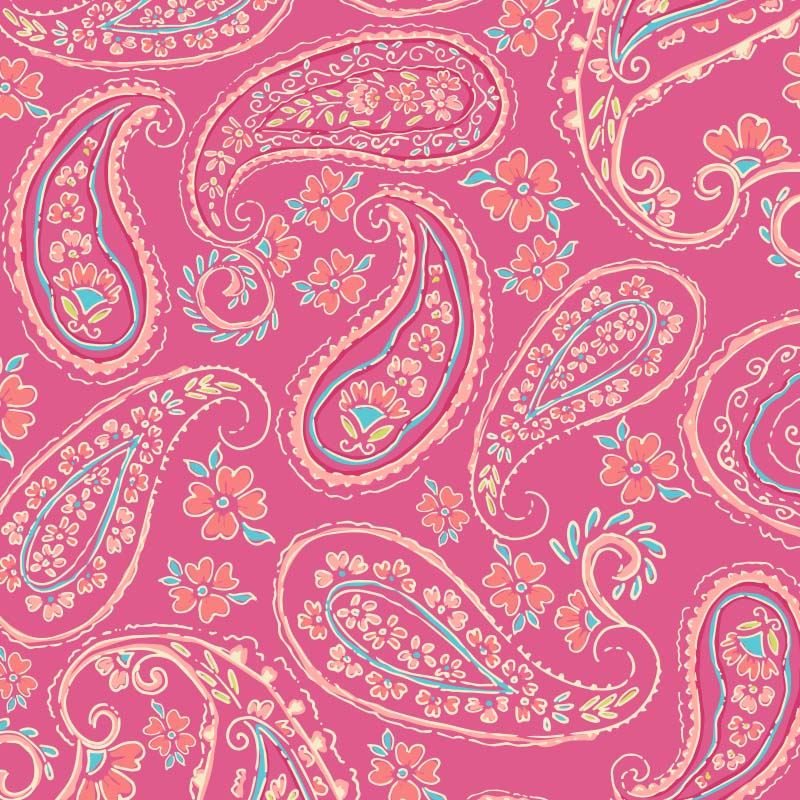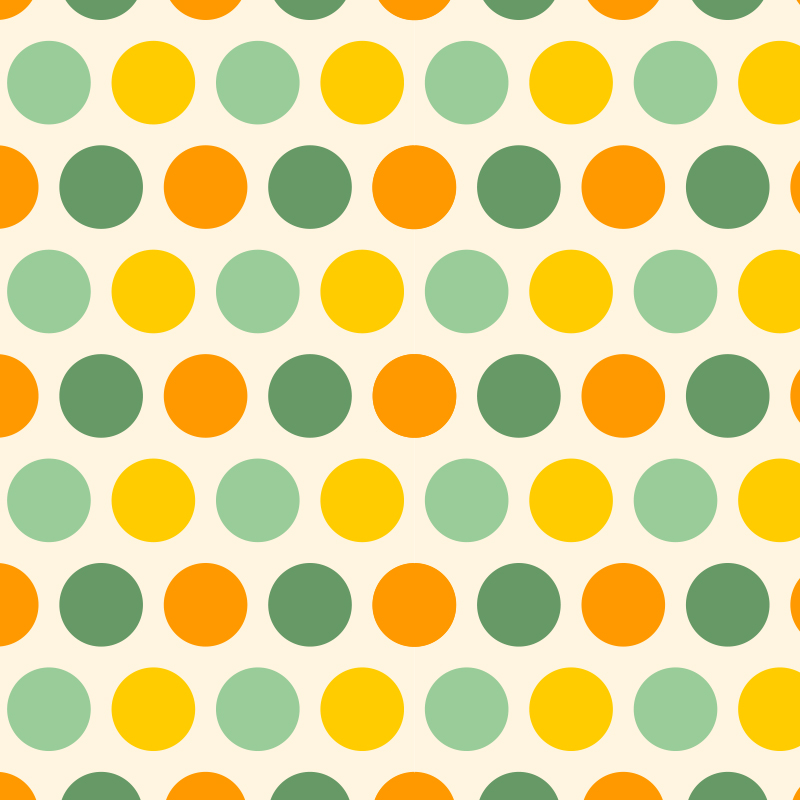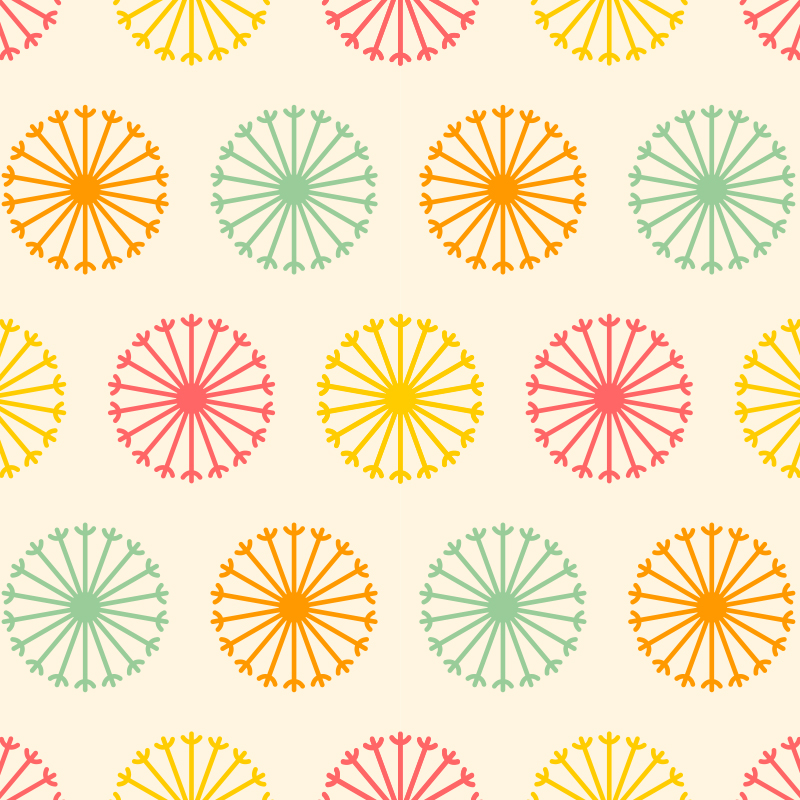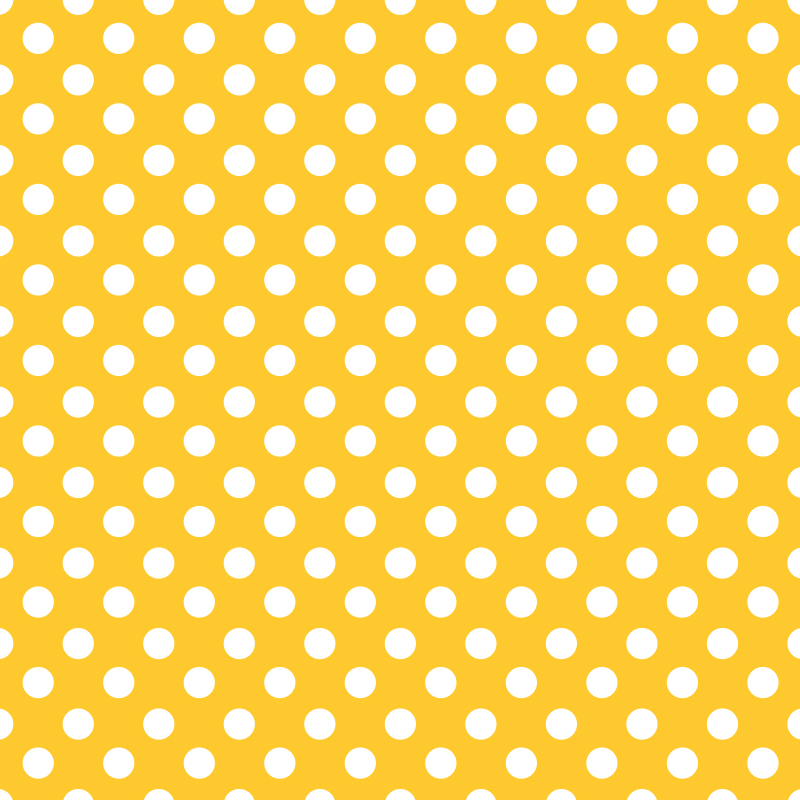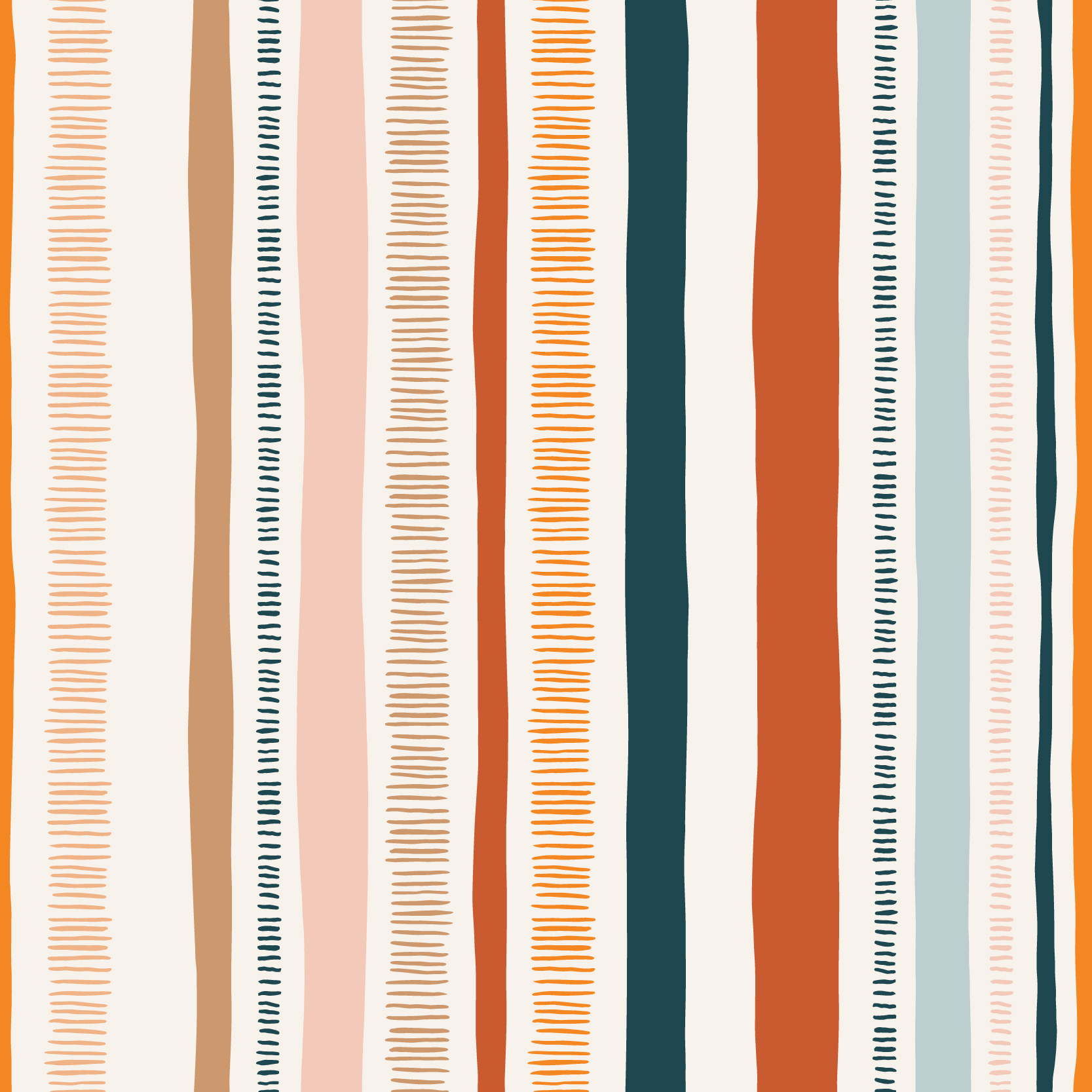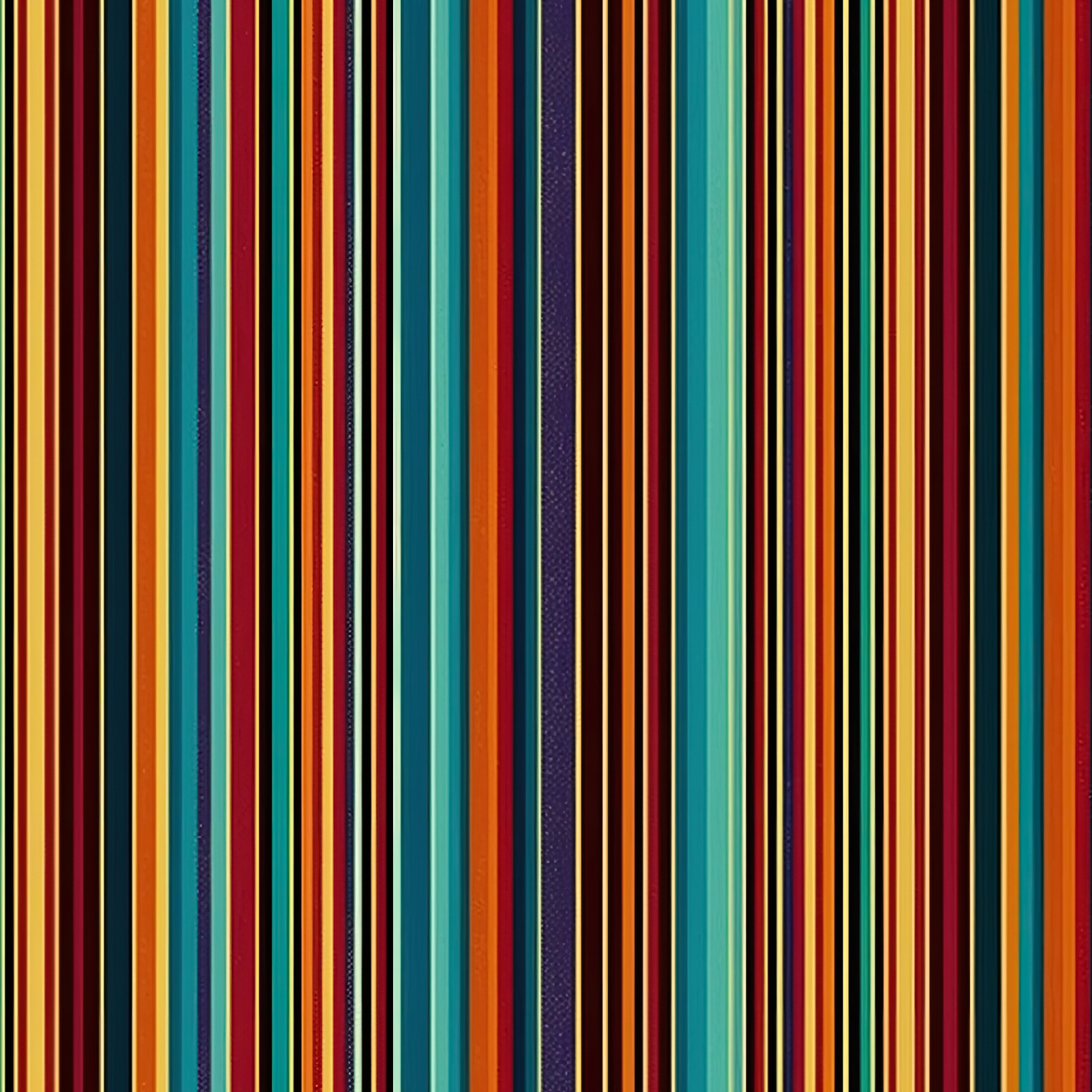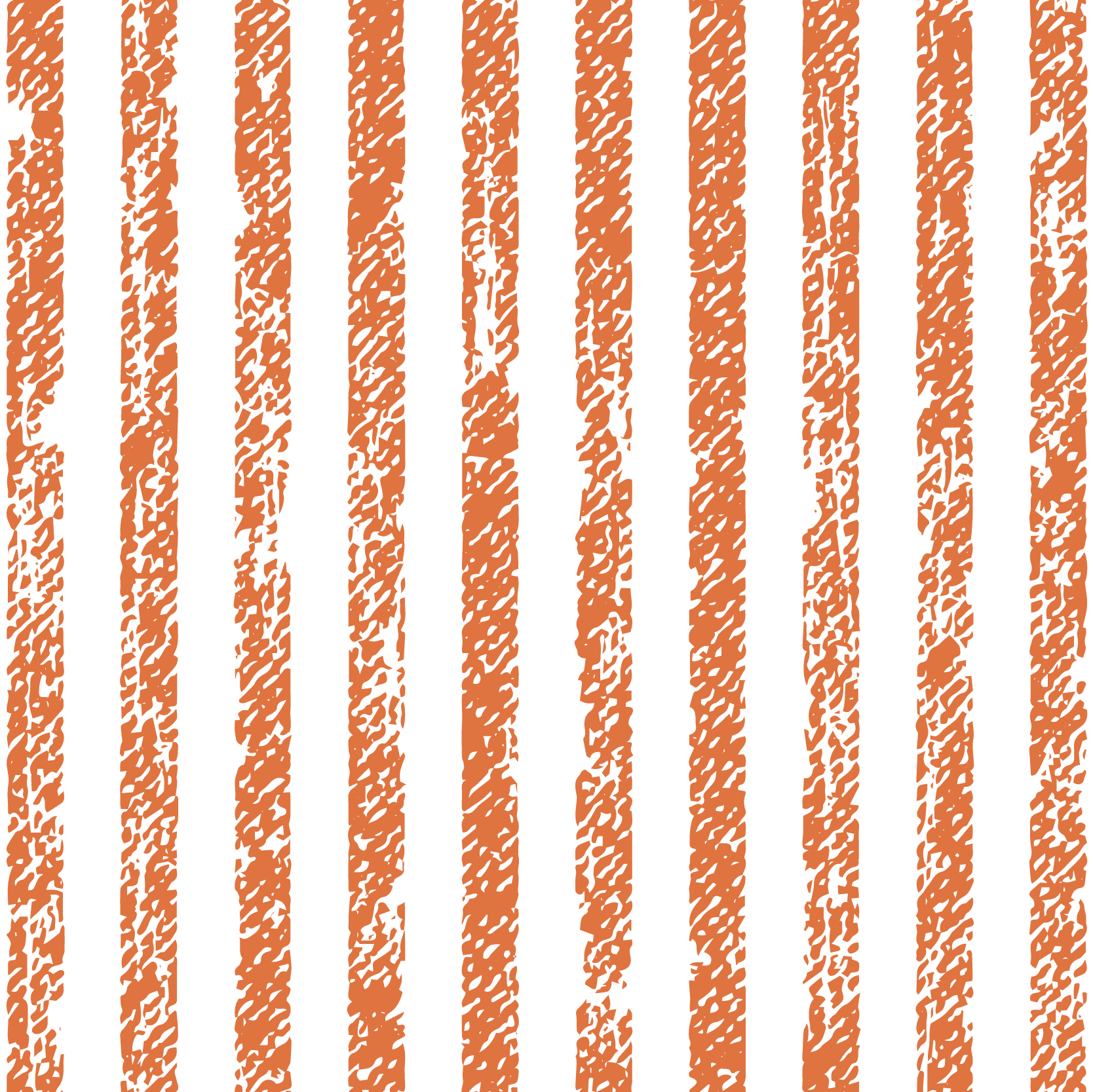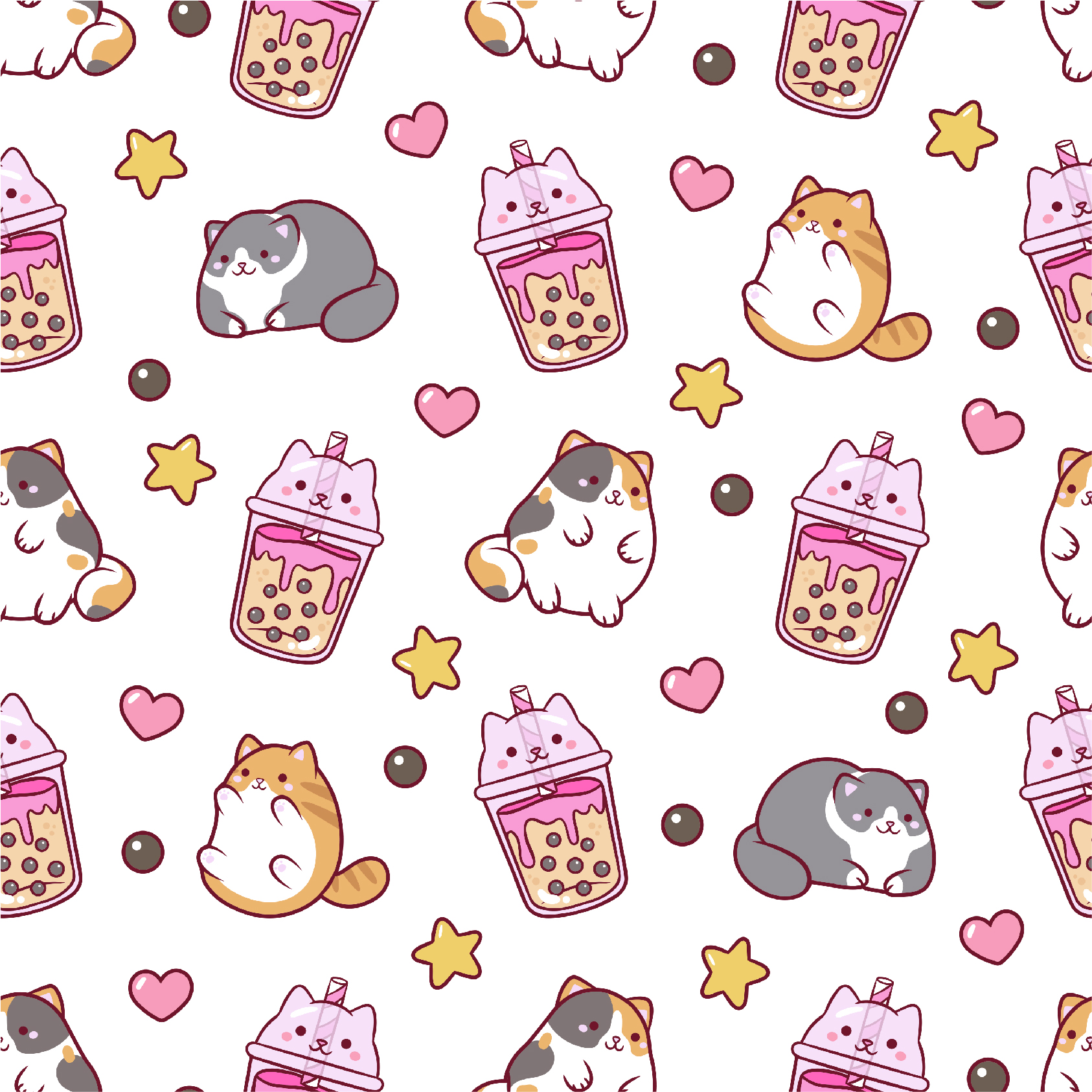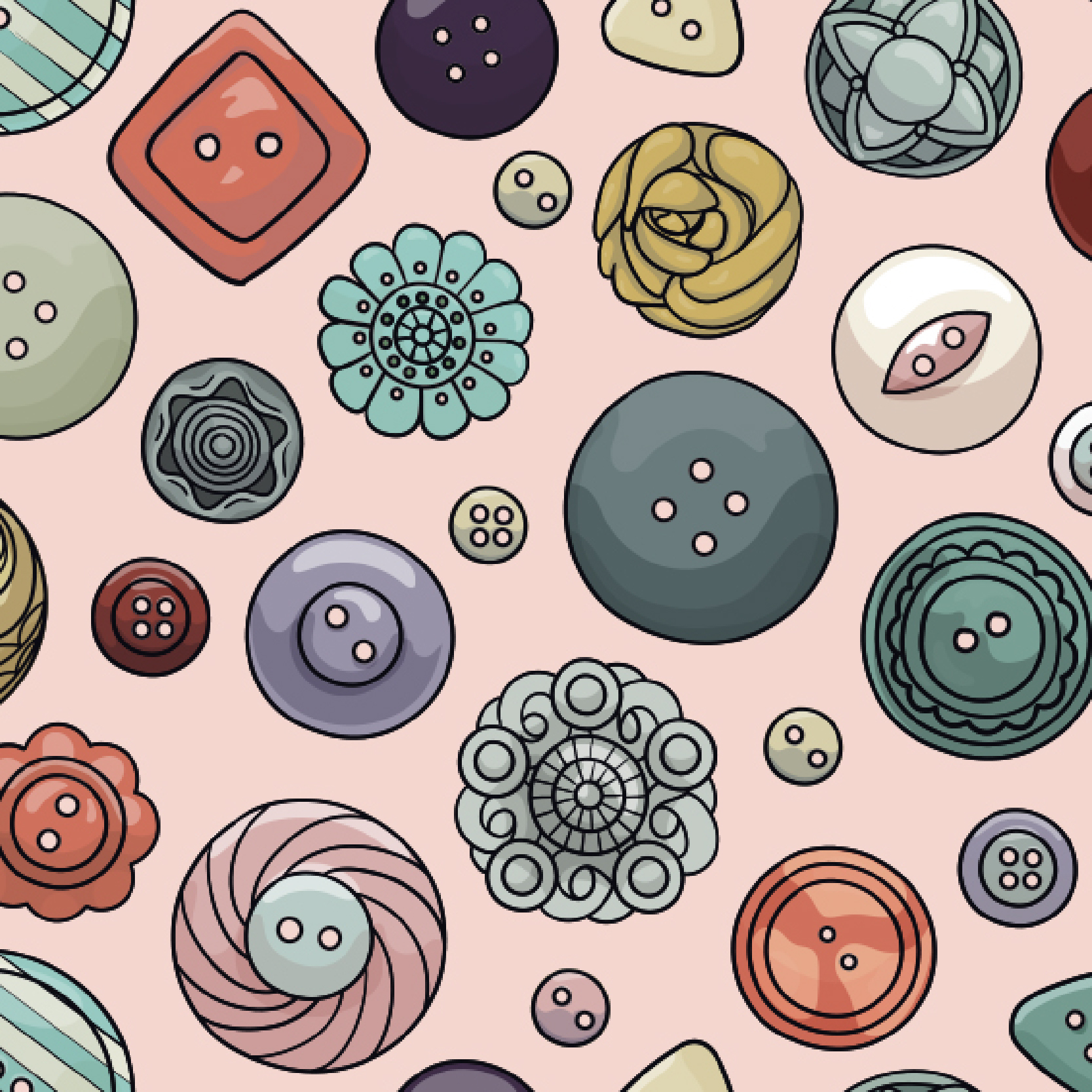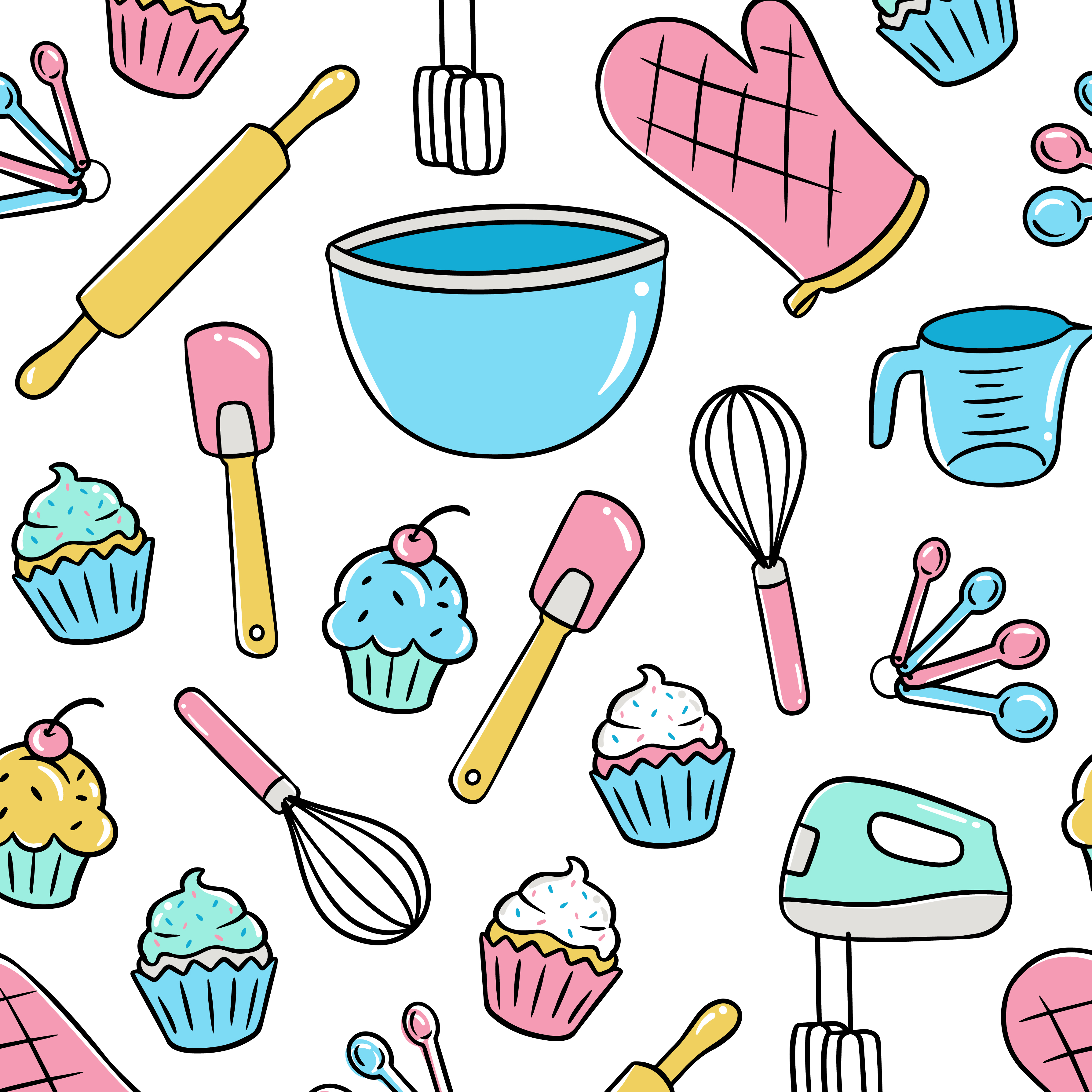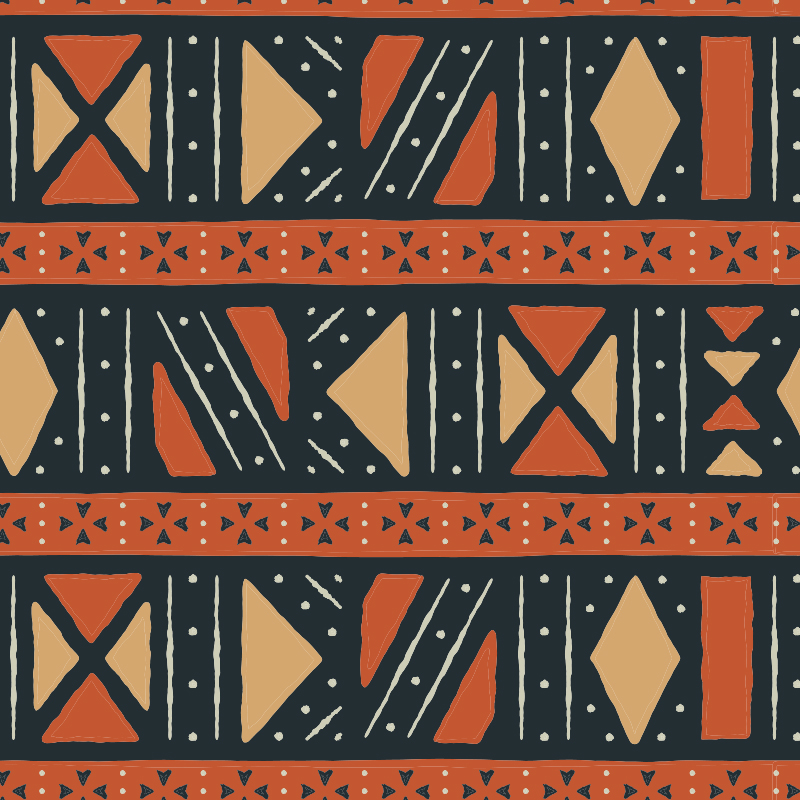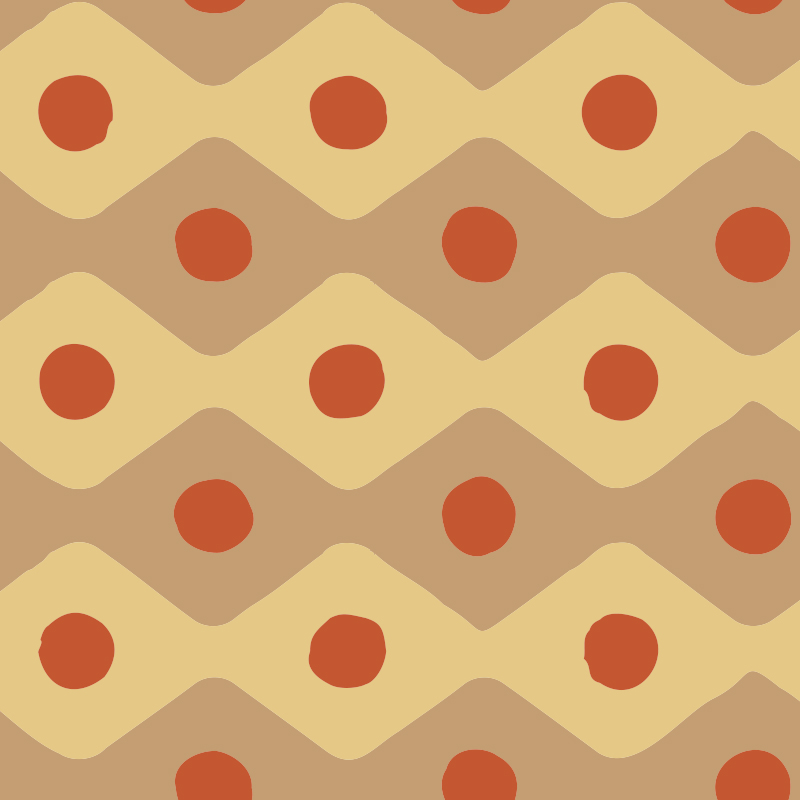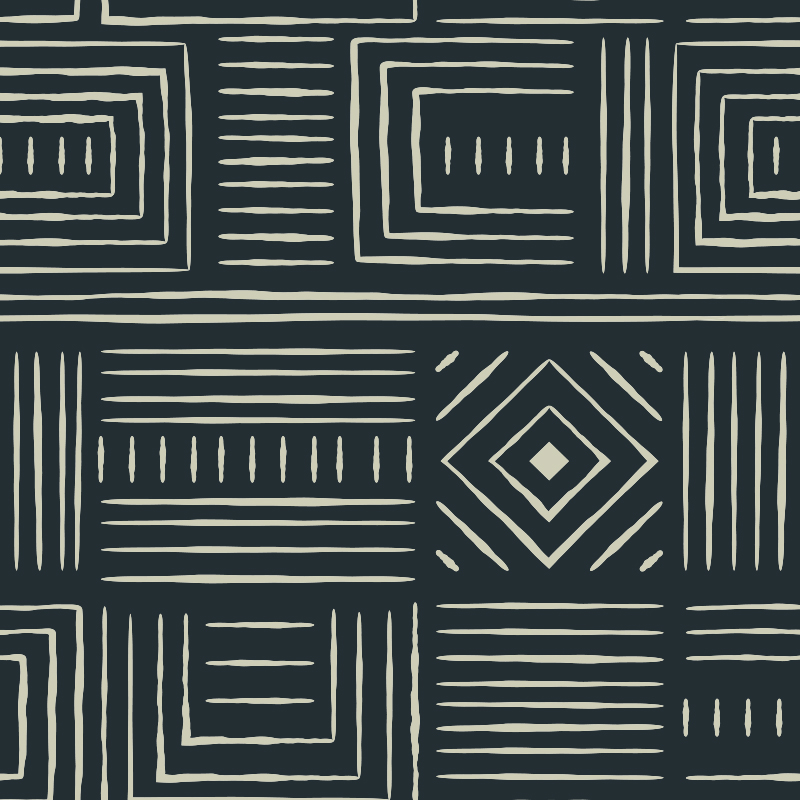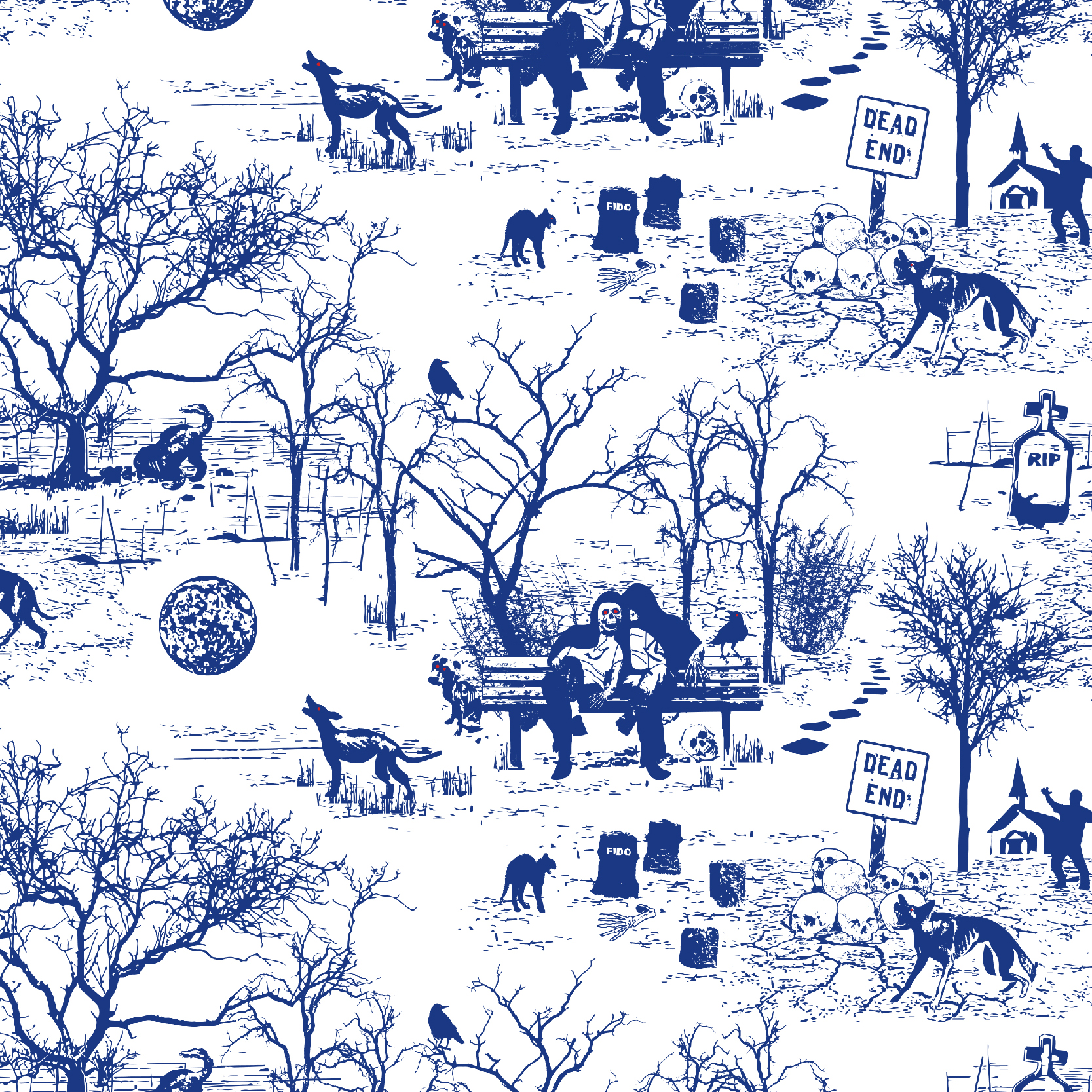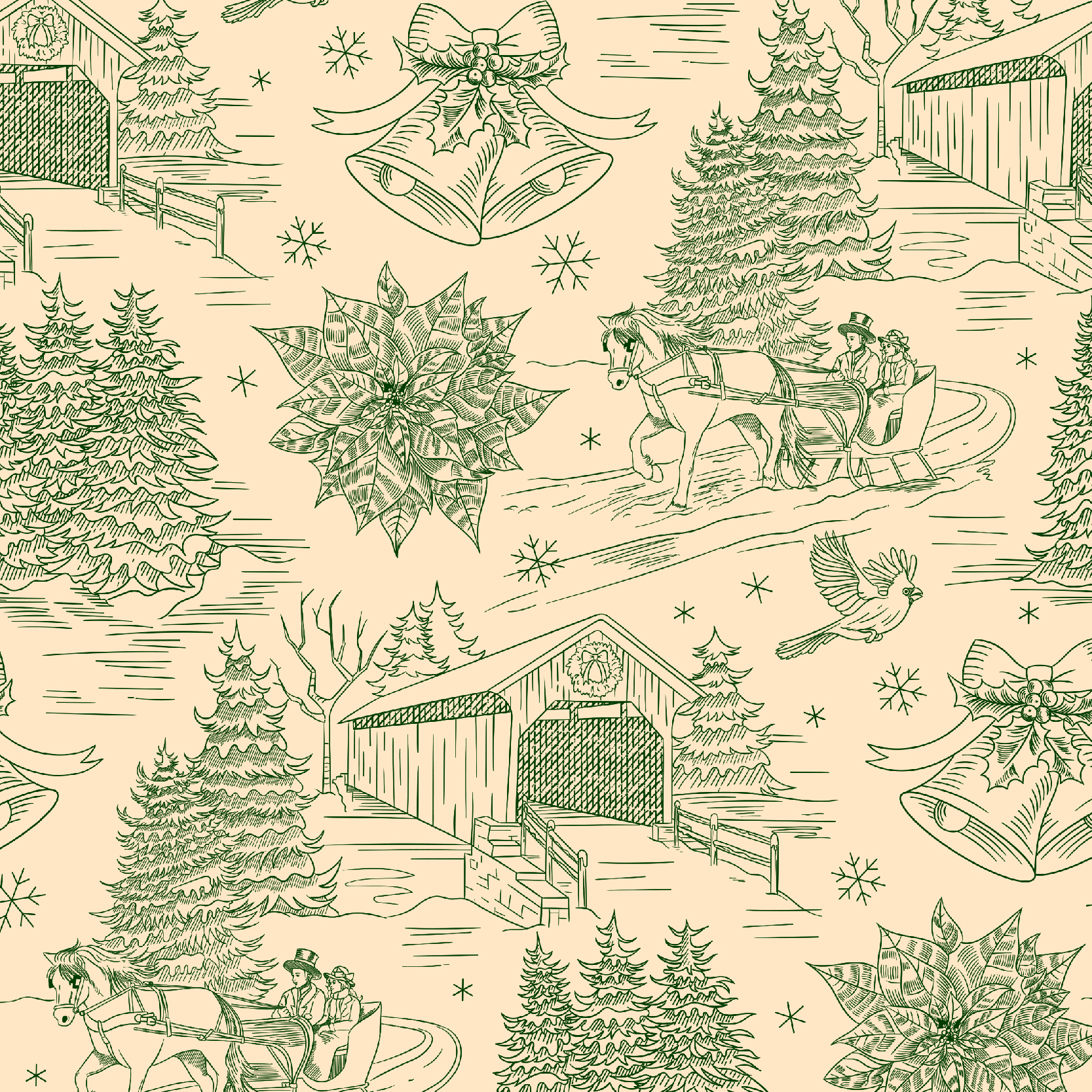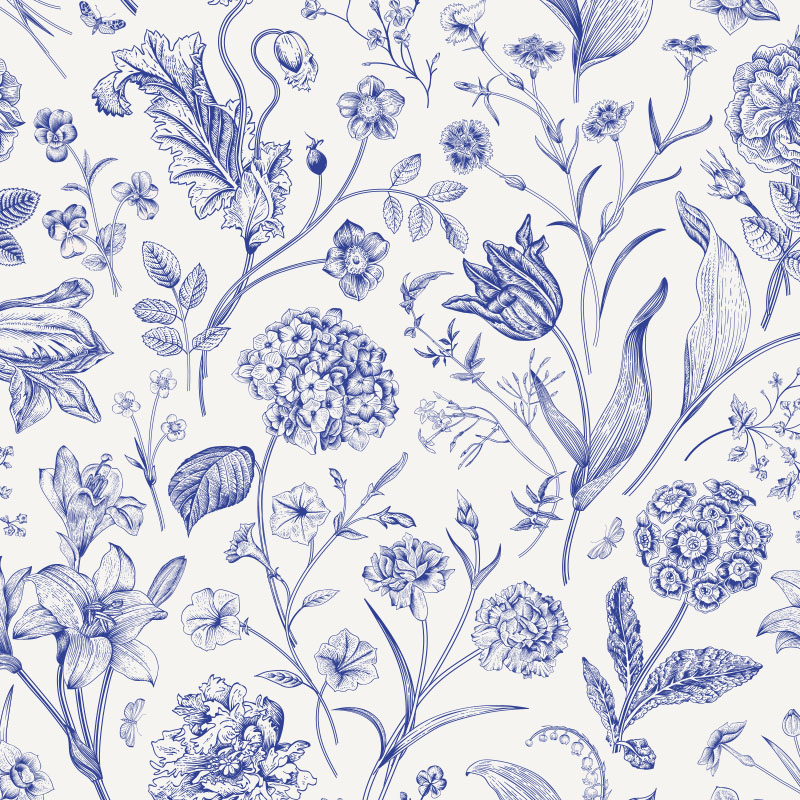Try Skillshare today with one-month free membership--click here now!
Surface PATTERN Design Ideas (motifs / subject matter)
Surface pattern designs are everywhere, and they surround us from when we wake up to when we get ready for bed and everything in between. Surface pattern designers create them with the intent to catch your attention. Some pattern designs feature contrasting color combinations, while others may use bold shapes or large motifs.
There are many different surface patterns to explore as you create your style and unique designs; floral motifs, geometric shapes, or even a mixture of both! Some surface pattern designers will look at other illustration art to find inspiration, while others might use their surroundings like nature or architecture. A good design project starts with inspiration.
Floral PATTERN DESIGN
Floral motifs are one of the most popular subjects used in surface pattern designs. Flowers come in a variety of color palettes to suit any mood. People enjoy being happy, and flowers brighten many people's days.
The floral category includes a large selection of plants, including flowers and other greenery.
Many floral design ideas include calico, botanical, abstract, stylized, ditsy, geometric, traditional, a vintage twist, and contemporary.
GEOMETRIC PATTERN DESIGN
Geometric repeat patterns use non-representational shapes such as lines, squares, circles, and triangles. These patterns include objects that repeat themselves. If the geometry has symmetry, the surface pattern will have balance and order.
Geometric patterns can be widely adaptable, visually appealing, and at times, very functional. You can use them to give your repeat work a softer elegance or vibrant life.
We see these patterns in many different forms, including textile designs, gift wrap, and wallpaper among other surfaces. Some surface pattern design inspirations for geometrics include stripes, checks, honeycomb, and chevrons.
Paisley PATTERN DESIGN
The paisley is an ancient symbol that goes back to the depths of history and is today found worldwide. It's significantly tied to Iran and India, symbolizing enlightenment, love, and devotion.
The paisley is a curved and embellished tear-shaped motif. The pattern generally has a stylized flower or leaves, and has many nicknames, including the Persian Pattern.
Paisley designs run the gamut from minimalist to ornate, and they can be of varying sizes. Surface pattern design ideas would include pattern designs that are geometric or free-form and can have flowers, leaves, vines, swirls, branches, or other floral elements incorporated into the design process.
DOTS PATTERN DESIGN
A dot repeat pattern consists of similarly sized and evenly spaced motifs or a group of motifs. However, you do not need to use only dots. The dots can be anything arranged to emulate a dotted look. Often these designs are used in patterns for children, stationery, and wallpaper.
The dot-based surface pattern design first appeared in Paris in 1820, and it became widely popular in the early 1900s. Of course, polka dots are still around today, and they generally trend more during the spring and summer months.
Stripe PATTERN DESIGN
Stripes are a timeless design element with endless pattern possibilities. There are the traditional horizontal and vertical stripes and more complicated designs, including textures or patterns like zig-zags and diagonals.
Stripes come in all sizes, but they have in common their power to add a striking pop of energy into any home decor or outfit.
Whether you prefer stripes that run up and down, stripe surface patterns in the shape of chevrons or zig-zags, or ones that follow a more diagonal line, there is something for everyone!
Conversational / Novelty PATTERN DESIGN
Conversation designs descriptively have recognizable objects or scenes, except for flowers. These novelty surface patterns have been around since the early 1900s but became very popular in the 1940s.
When you look at some of the quirky patterns used on old designs and wallpaper patterns, it becomes clear why they were called “conversational prints."
Most of the early surface pattern designs were made for children and featured nursery rhymes, baby animals, children at play, cartoon characters, alphabet letters, and numbers.
These designs create a nostalgic feeling, which often makes us smile. Today, many top designers use vintage fabric designs to inspire their fashion textiles and home decor patterns.
EThnic PATTERN DESIGN
An ethnic repeat pattern refers to a design that is common to one nationality or cultural tradition.
There are many colorful pattern styles and tastes in ethnic designs. Surface pattern designers use this as inspiration and broaden their work portfolio. Combining creativity with traditional culture often helps to uncover new looks.
Explore these influences for new ideas, such as Tribal, African, Mexican, Indonesian, Middle Eastern, and Folk Art. To capture the essence of traditional handicrafts and ethnic aesthetics, an innovative approach to color palettes and style will create a fresh impression.
Toile De JOUY PATTERN DESIGN
Toile de Jouy, or toile (pronounced “twall”) patterns are narratives, often telling stories with detailed and illustrative scenes. In the past, love and romance were popular themes in the old designs, with couples courting or cuddling.
The motifs or scenes generally ranges from four to six and are arranged in a half-drop repeat pattern for an easy flow. Illustrations can be arranged tightly together or loosely spaced apart.
Traditional French toile designs would have a single color printed in relief on a piece of white or off-white fabric. The most popular color palettes were black, gray, brown, red, purple, or blue. This design style has remained popular in home decor and interior design.
What is your favorite subject matter when designing patterns? Which motif might you consider for your next surface pattern design project? What will capture the essence of what you want? Now it's up to you!
Looking for the Most Common Surface Pattern Repeats?
Produce dynamic patterns with these eleven most common surface pattern repeats:
1) Full Drop Repeat also called a Block Repeat and Straight Repeat
2) Half Drop Pattern Repeat
3) Brick Pattern Repeat
4) Tossed / Random Pattern Repeat
5) Diamond Pattern Repeat
6) Ogee Pattern Repeat
7) Stripes Pattern Repeat
8) Scale Pattern Repeat
9) Mirror Repeat Pattern (Full Drop)
10) Mirror Repeat Pattern (Half Drop)
11) 4-Way-Mirror Pattern Repeats (Turn-Over)
Looking for the Most Common DIRECTIONAL PATTERN REPEAT TYPES?
Check out these directional pattern layouts:
1) All Over Layout
2) One Way / Directional Layout
3) Two Directional Layout
4) Multi-directional Layout
5) Free-Flowing Layout
6) Engineered / Placement layout
